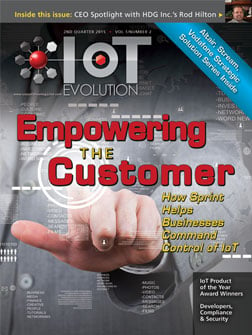With a growing concern over the ability to cut costs while increasing revenues, on one hand you might expect businesses to wisely continue to invest in technology that will ultimately pay off in lower monthly expenditures. On the other hand, you could also argue that they might be hesitant to lay out capital in the short term in the interest of maintaining lower CAPEX, especially in the case of smaller businesses with limited capital resources.
For vendors focused on the small business space, the good news, according to a customer survey conducted by hosted VoIP

provider RingCentral between November 27 and December 13, is that small businesses are prepared to increase their technology investment in the coming year, particularly with regard to PCs and communications services.
For unified communications solutions providers, this is particularly good news, since an overwhelming majority indicated multiple communications technologies are critical for their overall business success (see Table 1). Indeed, each of the three key means of business communication was listed by small business owners as being central to their ability to conduct business.
Given that each of these businesses likely already employs each of these technologies in their everyday business activities, the fact that 60 percent of more than 100 respondents to the survey said they plan to increase their technology spend is cause for optimism for the vendor community. In fact, only 6 percent indicated plans to cut spending, while 31 percent are intent on maintaining their current spending levels.
More than half of those with a planned increase in spending — 38 percent of overall respondents — say they are looking to leverage VoIP technology, including phone systems, smartphones, and VoIP services, which will bring the total VoIP deployment to 78 percent of the respondent pool.
In addition, Web 2.0 technology usage is also set to climb in 2008, including click-to-call, blogging, social networking, IM, and text messaging, as business owners look to find new ways to interact with customers and colleagues.
For instance, while 34 percent of respondents already have incorporated click-to-call features on their Web sites and email signatures, another 41 percent indicate a desire to do so next year.
Social networking (i.e., LinkedIn,MySpace, Facebook (News - Alert), etc.) and IM and text messaging usage is also expected to increase significantly — more than 25 percent of respondents say they will implement messaging as a communications alternative between employees and customers.
Interestingly, there still appear to be some issues with VoIP service: 14 percent of respondents said VoIP was the most disappointing business technology they had tried in 2007. However, 14 percent said mobile devices, like PDAs, mobile phones, and smartphones, were their best technology adoption of the year.
RingCentral (News - Alert) has a solution for those business owners out there that still have doubts about VoIP.
“We realize that some small businesses that tried VoIP were disappointed — a number of early industry players over-promised and under-delivered on this technology,” said Vlad Shmunis, CEO of RingCentral. “Our approach is to let customers try before they buy, and determine if their PC and broadband connections are VoIP-ready.”
Importantly, services like RingCentral also don’t require that customers outlay significant amounts of capital to get into VoIP — RingCentral works equally well with PSTN

phones and mobile devices.
Interestingly, despite increasing adoption of VoIP, most respondents, despite claiming they will do at least some work during the holidays, say they will not communicate using VoIP. Eighty percent of respondents, in fact, say they will work during the break, with a staggering 56 percent saying they are willing to interrupt their holiday dinner for an important customer (some would suggest a re-evaluation of priorities is in order).
In some ways, there is a struggle ahead for business VoIP providers, with a group of naysayers still lingering. But, the trend will be for businesses to continue their investment in technology, which will certainly include some of these contrarians — this is an opportunity for companies like RingCentral to convince them the value of VoIP has not been a misrepresentation.
Erik Linask (News - Alert) is Associate Editor of INTERNET TELEPHONY, IMS Magazine, and Unified Communications. Prior to joining TMC (News - Alert), he was Managing Editor at Global Custodian, an international securities services publication. To see more of his articles, please visit Erik Linask’s columnist page.
Magazine, and Unified Communications. Prior to joining TMC (News - Alert), he was Managing Editor at Global Custodian, an international securities services publication. To see more of his articles, please visit Erik Linask’s columnist page.
Be Sure to visit TMC's White Paper Library, which provides a selection of in-depth information on relevant topics affecting the IP Communications industry. The library offers whitepapers, case studies and other documents which are free to registered users.
Communications industry. The library offers whitepapers, case studies and other documents which are free to registered users.
Today’s featured White Paper (News - Alert) is titled VoIP Doesn’t Require Any Phone Equipment Investment, brought to you by Accessline.
 Internet Protocol (IP) Internet Protocol (IP) | X |
| IP stands for Internet Protocol, a data-networking protocol developed throughout the 1980s. It is the established standard protocol for transmitting and receiving data
in packets over the Internet. I...more |
 IP Multimedia Subsystem (IMS) IP Multimedia Subsystem (IMS) | X |
| This shows the structure of the IMS architecture where potential Applications Servers optimize content as well bandwidth. In Scenario Y, companies may provide Feature Servers Content Manager or Multi...more |
 Public Switched Telephone Network (PSTN) Public Switched Telephone Network (PSTN) | X |
| A PSTN number is a dialed call which is switched or connected via a CO switching system called a Class 5 End office or in SS7....more |
 Voice over IP (VoIP) Voice over IP (VoIP) | X |
| A real-time communications system that converts voice into digital packets containing media and signaling data that travel over networks using Internet Protocol....more |
 Internet Telephony Magazine
Click here to read latest issue
Internet Telephony Magazine
Click here to read latest issue CUSTOMER
CUSTOMER  Cloud Computing Magazine
Click here to read latest issue
Cloud Computing Magazine
Click here to read latest issue IoT EVOLUTION MAGAZINE
IoT EVOLUTION MAGAZINE




